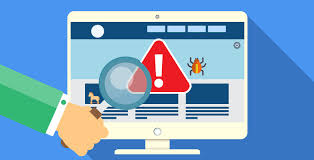How To Check If a Website is Safe or Not? Look for these Top 5 Signs
There are numerous websites on the Internet today, and each day an average user visits about 20 to 25 sites. Some people scroll through a particular website with a purpose, while others are redirected from various sources such as Twitter, Facebook, etc.
When someone visits a website, they think the information provided on the site is accurate and safe to scroll further. But this is not true as several websites are not secure on the Internet and can steal your information, spread malware, send spam to your e-mail, etc.
1. Use a Website Safety Check Tool
Since we know, the web browser has built-in security. You can download the website security checker like Google Safe Browsing to your desktop or phone for more website security, authenticity, and reliability.

Once it's downloaded, copy and paste the website's URL into the auditor's search box and click the Enter button. Google's Safe Browser Checker will test the URL and report on its reliability in minutes.
2. Double-check the URL
There are very few people who pay little or no attention to their browser's address bar. The address bar contains a ton of vital information about your location and level of security.
So the next time, if you visit or connect to a website, checks the URLs of sites before clicking on them. Therefore, it's a quick and easy way to do your website verification by checking the URL. You can get an approximate idea of the location of this link by carefully noting the URL.
3. Check the Domain Name
A simple and easy way to fool the users is by creating websites with addresses that mimic those of the big brands. It is one of the most common tricks of scammers to browse the address and domain name. Therefore, it is always useful to check the address bar if you are redirected to a website from another page.
If in doubt, confirm the spelling of the URL because attackers often replace the words with visually similar characters like Yahoo instead of Yah00.com, Paypal instead of payPaal, or Amazon instead of Amaz0n.
4. Verify Trust Seals
When you visit a site, check the trust seals such as McAfee, PayPal, Norton Secured provided by Symantec, Google Trusted Store, etc. A trust seal indicates that the website is working with a security partner or has a HTTPS security feature.
These trust seals are usually placed on the login page, home page, and checkout pages. These seem to be regular signs, but these seals are the sign of security at the specific site. You can also click on the badge to check whether the seal of trust is legitimate or not.
5. Check the Company is Genuine
There are a few other signs you can look for to help you know if a website is safe or not.
- About Company: If on “About Us” page of the website the content is not providing the appropriate information of the company and contradicts in various points, it is a red indication, means that the business is uncoordinated and maybe a scam to trick the users.
- Address and Phone number: If the business lists a physical address and phone number, they are more likely to be a real business. Reputable companies will show their information so you can contact them if there is a problem.
- Privacy Policy: Reputable and trusted websites always come with privacy policies as it is a law in most countries. It also gives you the idea of a site that treats your data as if it sells or stores it. So, take a minute from your schedule to find the privacy policy on the website.
- Return Policy: Reputable sites have their return and shipping policies. If you can't find these policies on their website, you probably won't want to buy from them.
Closing words
For some people purchasing and selling things on the Internet can be a scary task as well as can require some extra security measures to surf online. Hence, if you are not sure, "How do I check a website is safe," it is better to bounce back and do some research first. It is good to be careful and not to fall into any online scams or frauds.





